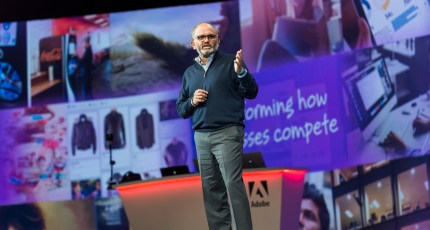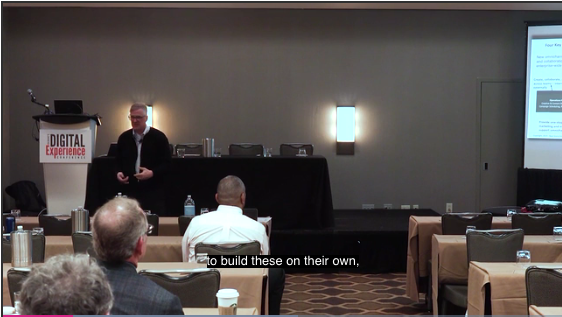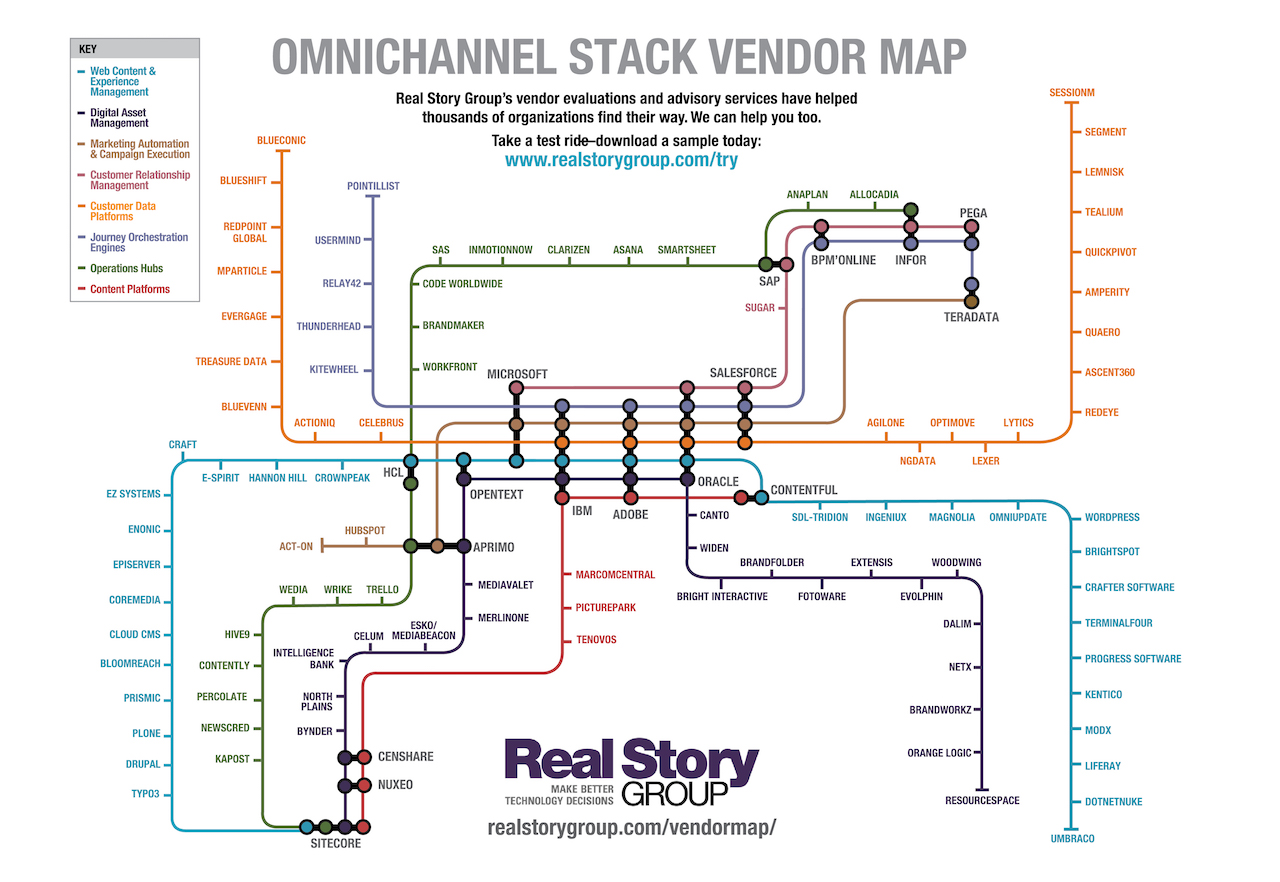




Many of you have looked into customer data platforms. Many organizations kind of built these on their own. Some organizations are still choosing to build these on their own, sometimes for good reasons, sometimes not.
This omnichannel content platform is really interesting. This is a space that's kind of calved off from parts of the WCM world and parts of the DAM world. In this idea that I can have a core set of shareable assets that can be used across all different channels. That marketplace is very young and still kind of in formation. Journey orchestration and decisionining, very interesting as well.

RSG evaluates martech and CX technologies to assist enterprise tech stack owners. To maintain its strict independence, RSG only works with enterprise technology buyers and never advises vendors. Read More.

Customer journey orchestration engine software is designed to help organizations analyze customer interactions across multiple touchpoints, execute the best communications and predict future customer interaction.

For the past decade, most enterprises have focused on scaling and modernizing their martech and digital experience (DX) stacks, pushing ever-richer content and experiences through web content management (WCM) systems, marketing automation/ESP platforms, and CRM environments, among others. This made sense for improving digital customer engagement in those platforms, but also led to serious challenges that now need attention. Read More.

For years, digital asset management (DAM) was either not included or was marginalized in the martech conversation. People viewed DAM as the tool of creatives, brand managers, and even (wait for it) librarians.
But it’s well beyond time we recognize that not only should DAM be in the martech conversation, but that DAM has become an anchor service in enterprise martech stacks... Read More.

After you have done your research, found out about the benefits of CDPs, how they differ from other customer data management platforms, and found the right CDP for your use-cases, it's time to get prepared to actually bring one in house and get it set up, running and supported.
If you want a successful implementation showing value and ROI back to the business, we have some advice from key luminaries in the field on things you need to think about when implementing a CDP system. Read More.

Customer data platform (CDP) technology is rising in popularity for good reason: CDPs try to address chronic difficulties marketers have endured around obtaining reliable access to a centralized store of information about their customers and prospects.
The CDP technology marketplace has expanded substantially. At Real Story Group, we evaluate 25 players, with more each quarter. Read More.

From a technology perspective, many of us focus intently on martech stacks, but the reality is that most large enterprises have evolved multiple — often overlapping — stacks across the customer experience spectrum: for marketing, sales, service & support, advertising, and web/DX.
Of course, your customers don’t care about your stacks. They expect to be able to engage coherently and consistently with you regardless of channel, and continue doing so when new channels like voice emerge. Read More.

As modern customers interact with your brand across dozens of different channels, they expect a unified and seamless experience across all touchpoints. In order for organizations to deliver on this expectation of a unified customer experience, they need the appropriate technology platforms in place to allow customer-centric marketing strategies to be implemented.
According to Tony Byrne, martech analyst and Founder of Real Story Group, DMPs are all about collecting anonymous data, while CDPs are focused on 1st party data, or personally identifiable information (PII). Read More.

Organizations in the market for a digital experience platform (DXP) over the next two years can expect to spend more effort and money after they select a vendor. The selection process is only the beginning.
Tony Byrne of Real Story Group contends DXPs don’t exist. “There is no marketplace here, because no enterprise digital leader in her right mind would actually purchase ‘digital experience’ as a platform,” ... Read More.

Fig has been hired as the brand, creative and media AOR for Children’s Hospital Colorado, with the goal of elevating the medical network’s reputation.
 Industry surveys repeatedly show that more than half of technology projects fail to meet their objectives — or just fail outright.
Industry surveys repeatedly show that more than half of technology projects fail to meet their objectives — or just fail outright.
There are many reasons for this, but in my experience, most technology problems originate in the critical early stages of an initiative. Once the boat gets headed in a particular direction, it can be hard to steer it back on course.... Read More.
 Earlier this month, IBM and HCL announced a deal worth $1.8 billion, in which HCL will buy a bunch of IBM software products. The transaction, expected to close by mid-2019, addresses a potential market of more than $50 billion.
Earlier this month, IBM and HCL announced a deal worth $1.8 billion, in which HCL will buy a bunch of IBM software products. The transaction, expected to close by mid-2019, addresses a potential market of more than $50 billion.
Tony Byrne, analyst and founder of Real Story Group, has been watching and writing about many of these tools for the past 15 years. In his company blog, he outlined four take-aways from the deal:

 Amid all the uncertainty around "digital transformation," one of the more clarifying developments of the past several years is understanding that delivering omnichannel digital experiences requires a stack of technologies. Yet reasonable people still disagree: What should that stack look like?
Amid all the uncertainty around "digital transformation," one of the more clarifying developments of the past several years is understanding that delivering omnichannel digital experiences requires a stack of technologies. Yet reasonable people still disagree: What should that stack look like?
It Depends
Any DX stack should necessarily depend on the contours of your enterprise. For example ... Read More.
 Tony Byrne thinks that technology should not slow marketers down. But, he says, many marketers feel just that. “Getting the right technology isn’t sufficient for digital success, but it is necessary to get the right fit,” Byrne, the founder of analyst firm Real Story Group, said Monday during a workshop he led on how to buy marketing technology at our MarTech Conference in Boston.
Tony Byrne thinks that technology should not slow marketers down. But, he says, many marketers feel just that. “Getting the right technology isn’t sufficient for digital success, but it is necessary to get the right fit,” Byrne, the founder of analyst firm Real Story Group, said Monday during a workshop he led on how to buy marketing technology at our MarTech Conference in Boston.
By using a deliberate methodology to choose martech solutions, Bryne said that marketers can get the kind of technology they need to meet their objectives.. Read More.
 Tony Byrne, founder of tech analyst firm Real Story Group, says marketers have been relying on the wrong things to filter their content tech choices. He feels so strongly there’s a better way that he co-wrote a book called The Right Way to Select Technology: Get the Real Story on Finding the Best Fit.
Tony Byrne, founder of tech analyst firm Real Story Group, says marketers have been relying on the wrong things to filter their content tech choices. He feels so strongly there’s a better way that he co-wrote a book called The Right Way to Select Technology: Get the Real Story on Finding the Best Fit.
Traditionally, Tony says, tech selection is made based on one of four problematic approaches: